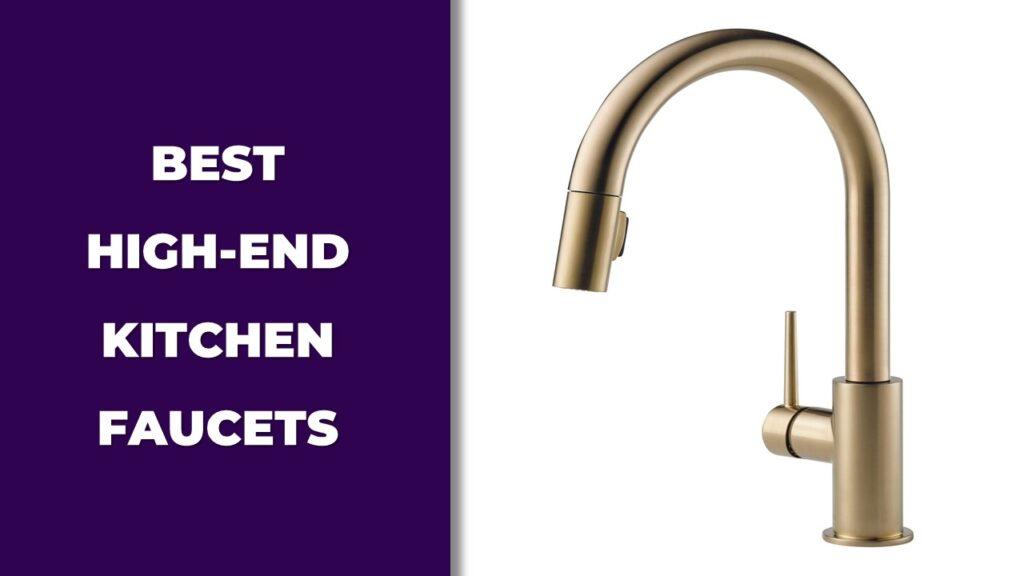
A metering cycle is the short time water flows after you press a faucet handle or button. It shuts off automatically, usually within 10 to 60 seconds, using an internal valve or cartridge that resets after each use. These faucets are common in public restrooms, schools, and commercial buildings because they help reduce water waste.
In this article, we’ll explain how a metering faucet works, what controls the timing cycle, how long the water should flow, and why it shuts off by itself.
What Is a Metering Cycle in a Faucet?
A metering cycle in a faucet is the pre-set period water flows after you activate the faucet. It’s a clever way to control water usage without needing to manually turn the faucet off. This cycle usually lasts a few seconds, depending on the settings, and shuts off automatically.
Here’s what makes it stand out:
- Water conservation: It limits how much water is used per activation.
- Hygiene-friendly: Since there’s no need to touch the faucet again after using it, it’s perfect for public restrooms or shared spaces.
- Consistency: You always know how long the water will flow, making it reliable.
- Simple design: Metering faucets are easy to use for kids, seniors, or anyone unfamiliar with fancy fixtures.
How Does a Metering Cycle Work?
The metering cycle works through a combination of simple mechanical or electronic components designed to control water flow for a set duration. When you activate the faucet, either by pressing a button or triggering a sensor, a valve opens, allowing water to flow.
Here’s the process in a nutshell:
- Activation: You press or touch the faucet, or it detects motion.
- Timed water flow: The mechanism releases water for a specific period.
- Automatic shutoff: Once the cycle is complete, the valve closes, and water stops flowing.
For example, if you’re washing your hands at a public sink, you might get a 10-second flow—just enough to rinse. These faucets are also handy in campervans or RVs, where every second of water flow can be crucial for conserving your tank supply.
What Are The Benefits of the Metering Cycle in Faucets
Metering cycles in faucets offer several practical benefits, making them a smart addition to homes, campervans, and public spaces. These faucets are designed to save water and provide convenience, which is why they’re becoming more popular in various settings.
- Saves Water: Metering faucets are great for controlling water usage. Since they shut off automatically after a set time, there’s no chance of leaving the water running accidentally. This is especially helpful in places where water conservation is a priority, such as campervans or eco-friendly homes.
- Hygienic Design: In public or shared spaces, hygiene is always a concern. Metering faucets minimize contact by shutting off without needing to touch the handle again, which helps reduce the spread of germs.
- Cost-Effective: By controlling water flow, metering faucets help lower water bills. This is particularly beneficial in high-traffic areas like schools or gyms, where water usage can quickly add up.
- Environmentally Friendly: For those who care about sustainability, metering faucets contribute to resource conservation. They help you use just the right amount of water without wasting a single drop.
- User-Friendly: These faucets are easy to use, even for children or the elderly. The timed flow ensures a consistent experience, making it accessible for everyone.
Metering faucets can be a game-changer for water conservation, and if you’re dealing with hard water, it’s also worth exploring faucets specifically designed to handle mineral buildup, like those featured in our kitchen faucets for hard water article.
What Are The Common Types of Metering Faucets
Metering faucets are available in several types, each tailored to specific needs. While their primary goal is to control water flow efficiently, the way they operate differs depending on the design.
- Manual Metering Faucets: These are the most straightforward type. You press a button or turn a handle to activate them, and water flows for a pre-set duration. They are commonly used in budget-conscious settings like schools or community centers.
- Electronic (Sensor-Based) Metering Faucets: These faucets use motion sensors to detect when water is needed. They’re highly hygienic since there’s no need to touch the faucet to start or stop the flow. They’re a popular choice for public restrooms and high-traffic areas.
- Thermostatic Metering Faucets: These faucets combine metering features with temperature control. They’re perfect for applications where both water flow and temperature need to be regulated, such as healthcare facilities.
- Push-Timer Faucets: This type requires you to press a button to start the flow, which then stops automatically after the timer runs out. They’re widely used in commercial kitchens and outdoor sinks, where water needs to be controlled but easily accessible.
How To Adjust the Metering Cycle in Faucets
Adjusting the metering cycle in your faucet is a simple process that lets you control how long the water flows after activation. Whether you want a shorter or longer duration, the steps are straightforward and don’t require advanced skills.
- For Manual Faucets: Locate the adjustment screw, which is usually near the button or handle. Use a flathead screwdriver to turn the screw. Turning it clockwise will shorten the cycle, while turning it counterclockwise will make the water flow longer. Make small adjustments, testing the flow each time until you get the desired duration.
- For Sensor-Based Faucets: The adjustment process depends on the specific model. Some faucets have buttons to adjust the flow duration, while others may require accessing settings via an app. Refer to the manufacturer’s guide for precise instructions tailored to your faucet.
- To Address Inconsistencies in the Cycle: If the faucet’s water flow is irregular or too short, it could be due to sediment buildup inside the mechanism. Disassembling the faucet and rinsing its internal components can often solve the issue, restoring smooth operation.
Regular adjustments and occasional cleaning help your metering faucet stay efficient and reliable, whether it’s in a home, campervan, or public space.
Practical Examples of Metering Faucets in Real-Life Scenarios
Metering faucets aren’t just about saving water—they’re designed to make everyday life easier. You’ve probably used one without even realizing it. Here are some real-life examples of where these faucets shine:
- Public Restrooms: These faucets are a staple in busy places like malls and airports. They save water by shutting off automatically, even if someone forgets to turn them off.
- Schools and Colleges: Perfect for teaching kids and teens about saving water. They’re easy to use and help prevent waste, especially during peak hours.
- Hospitals: Hygiene is critical in healthcare settings. Metering faucets reduce the need to touch handles, lowering the chance of spreading germs.
- Commercial Kitchens: In professional kitchens, water is used constantly. A metering faucet helps control the flow, making tasks like rinsing produce or washing hands quick and efficient.
- Campervans and RVs: When you’re out on the road, every drop of water counts. Metering faucets are a smart way to make sure you don’t run out of water while camping or traveling.
From public spaces to your personal adventures, metering faucets are all about convenience and conservation. They fit right into the flow of life—saving water, time, and effort wherever they’re used.
How To Troubleshoot Issues in Metering Faucets
While they’re reliable most of the time, faucets can occasionally act up. Don’t worry—most issues are easy to fix with a little patience and the right approach. Here are some common problems and how to solve them:
- Water Flow Stops Too Soon: If the water shuts off almost immediately after activation, it could be an issue with the adjustment screw. Locate it near the handle or button and try turning it counterclockwise to extend the cycle.
- Inconsistent Water Flow: This often happens when sediment builds up inside the valve. Disassemble the faucet, clean out any debris, and reassemble it. A clean valve usually solves the problem.
- Water Keeps Dripping After Shutoff: A worn-out seal is often the culprit. You’ll need to replace the rubber washer or O-ring inside the faucet. These parts are inexpensive and easy to swap out.
- The Button Feels Stuck: If the activation button or handle doesn’t move smoothly, check for dirt or buildup around it. Clean the area thoroughly and apply a small amount of silicone lubricant if needed.
- Sensor Isn’t Responding (for Electronic Faucets): First, check the batteries—they might need replacing. If that doesn’t work, inspect the sensor for dirt or smudges and clean it gently with a soft cloth.
Troubleshooting metering faucets isn’t as tricky as it might seem. With a little effort, you can get your faucet working like new again. And if the problem persists, it might be time to call in a professional to take a closer look. For insights on selecting the right faucet style to complement your sink and avoid common issues, take a look at our article comparing widespread vs. centerset faucets. Additionally, understanding the differences between 4-inch and 8-inch faucets can help you choose a design that fits your space and reduces maintenance needs.
Wrapping It Up!
Metering faucets are a practical solution for controlling water flow, especially in places where conservation matters. So, what is metering cycle in a faucet? It’s the timed flow of water that automatically stops after a pre-set period, saving water and reducing waste.
We explored how these faucets work, their benefits, and where they’re commonly used. Whether it’s in public restrooms, homes, or campervans, they’re a convenient and eco-friendly choice. Troubleshooting common issues is simple too, making them a reliable addition to any space. If you’re looking for a way to conserve water and simplify your faucet usage, metering faucets are worth considering.
Related FAQs
How long does the average metering cycle last?
Most metering cycles last between 5 and 30 seconds. The exact time can usually be adjusted to suit specific needs.
Can metering faucets be installed at home?
Yes, metering faucets can be installed at home. They’re especially useful in kitchens or bathrooms where water conservation is a priority.
Do metering faucets work with low water pressure?
Yes, many metering faucets are designed to work with low water pressure. However, the performance may vary depending on the specific model.
What should I do if the metering cycle is too short?
If the cycle is too short, adjust the timing mechanism. For manual faucets, this usually involves turning the adjustment screw. For sensor faucets, you may need to use the settings menu.
Are metering faucets easy to maintain?
Yes, they’re relatively easy to maintain. Regular cleaning and occasional part replacements, like seals or washers, will keep them working smoothly.
Where are metering faucets most commonly used?
They’re most commonly found in public restrooms, schools, hospitals, commercial kitchens, and campervans. Anywhere water conservation is a priority, these faucets are a great choice.

Dylan Foster is a family man with years of hands-on experience in plumbing, household maintenance, and fixing everyday issues around the home. A former plumber, Dylan knows what it’s like to deal with tricky leaks, worn-out parts, and all the little problems that pop up in a house. From plumbing repairs to kitchen fixes and garden hose setups, he’s done it all. Dylan shares real-world solutions to help others keep their homes running smoothly and avoid costly mistakes.




